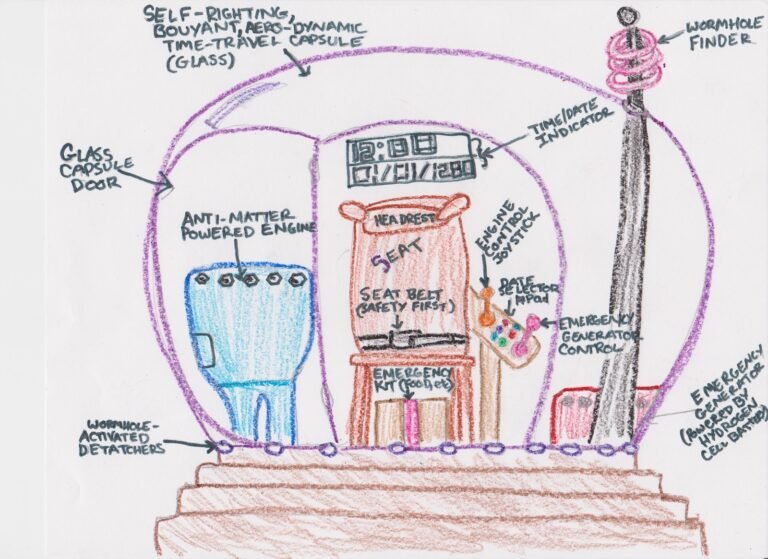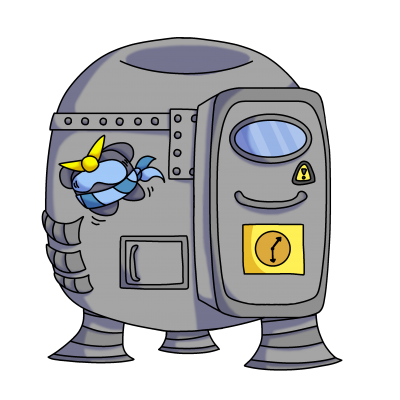How To Build A Time Travel Machine

How to build a time travel machine has fascinated humanity for centuries, appearing in everything from H.G. Wells‘ “The Time Machine” to modern blockbuster films. While time travel remains firmly in the realm of science fiction, the idea of building a time machine sparks curiosity and imagination.
Although we are far from actualizing this dream, exploring the theoretical and scientific principles behind time travel can be both enlightening and enjoyable. Here’s a speculative guide on how one might approach constructing a time machine based on current scientific theories and imaginative concepts.
Building a time travel machine is a captivating idea that merges cutting-edge science with speculative engineering. While we are still far from creating such a device, examining both the theoretical and practical aspects of time travel can provide deep insights into the structure of our universe and spark future technological innovations. In this exploration, we will investigate how to build a time travel machine and assess whether it is truly feasible.

1. Understand The Basics Of Time Travel Theory
Relativity: Albert Einstein’s theory of relativity is fundamental. Special relativity suggests that time is relative and can vary based on speed. General relativity further proposes that massive objects can warp spacetime, which could theoretically create paths for time travel.
Wormholes: These hypothetical tunnels in spacetime, predicted by general relativity, could theoretically connect distant points in time and space. If stable, traversable wormholes exist, they might provide a means of time travel.
Cosmic Strings: These are hypothetical one-dimensional defects in spacetime that might, if they exist, allow for closed timelike curves, creating loops in time.
1. Relativity
Special Relativity
Theory Overview: Special relativity, formulated by Albert Einstein in 1905, deals with objects moving at constant speeds, particularly speeds close to the speed of light. One of its key insights is that time and space are not absolute but relative.
Key Concepts:
Time Dilation: Time progresses more slowly for an object in motion compared to a stationary observer. For instance, if you travel at a high velocity through space, you would experience less passage of time than someone who remains on Earth.
Relativity of Simultaneity: Events that occur simultaneously for one observer may not be perceived as simultaneous for another observer who is moving relative to the first.
Length Contraction: Objects moving at high speeds will appear shorter in the direction of motion to a stationary observer.
Implications for Time Travel: Special relativity implies that traveling close to the speed of light could potentially allow for time dilation, where a traveler ages more slowly compared to someone who remains stationary. While this doesn’t allow for backward time travel, it does show that time can be experienced differently depending on speed.
General Relativity
Theory Overview: General relativity, introduced by Einstein in 1915, extends special relativity to include gravity. It describes gravity not as a force but as a curvature in spacetime caused by massive objects.
Key Concepts:
Spacetime Curvature: Massive objects, such as stars and planets, warp the fabric of spacetime around them. This curvature influences the movement of objects, causing them to follow curved trajectories, which we interpret as gravity.
Geodesics: Objects in free fall travel along the shortest paths through curved spacetime, known as geodesics.
2. Wormholes
Theory Overview: Wormholes are theoretical passages through spacetime that could create shortcuts between two distant points. They arise from solutions to Einstein’s field equations in general relativity.
Key Concepts:
Einstein-Rosen Bridges: Wormholes are commonly known as Einstein-Rosen bridges. These hypothetical structures connect two distinct points in spacetime, potentially allowing for instantaneous travel between them.
Traversable Wormholes: For a wormhole to be practical for time travel, it must be traversable, meaning it can allow matter to pass through. This necessitates specific conditions to prevent the wormhole from collapsing, such as the presence of exotic matter with negative energy density.
Implications for Time Travel: If traversable wormholes exist and could be stabilized, they might allow travel between different points in time as well as space. For example, if one end of the wormhole is moved very fast or placed in a strong gravitational field, it could result in a time difference between the two ends, potentially allowing for time travel.
3. Cosmic Strings
Theory Overview: Cosmic strings are hypothetical one-dimensional defects in the fabric of spacetime that may have formed in the early universe. They are predicted by some models of cosmic evolution and string theory.
Key Concepts:
Defects in Spacetime: Cosmic strings are theorized to be incredibly thin yet possess immense density, potentially stretching across the universe. Their intense gravitational fields could warp the surrounding spacetime.
Closed Timelike Curves: The presence of cosmic strings might distort spacetime in such a way that it forms loops or closed timelike curves. These paths through spacetime could theoretically loop back on themselves, potentially allowing for time travel to the past.
Implications for Time Travel: If cosmic strings exist and their effects on spacetime can be harnessed or manipulated, they could potentially create scenarios where traveling back in time is possible. Theoretical models suggest that moving around these cosmic strings in certain ways could allow a traveler to return to an earlier time, so how to build a time travel machine?
Summary
Special Relativity demonstrates that time can vary with speed, introducing the concept of time dilation, but it does not permit backward time travel.
Cosmic strings are hypothetical defects that could warp spacetime significantly enough to create closed timelike curves, which might make time travel possible.
Wormholes are theoretical passages that could link distant points in spacetime and might enable time travel if they can be stabilized and traversed.
General Relativity provides a framework where spacetime can be warped or curved, potentially facilitating time travel through mechanisms such as wormholes.
While these ideas provide fascinating theoretical possibilities, practical time travel remains speculative and far beyond our current technological capabilities. You can have more informations on these concepts in this article of Time Paradox.

2. How To Build A Time Travel Machine: Design Your Time Machine
Assuming we could build a time machine, here’s a speculative framework based on current theoretical physics:
Choose a Model:
The DeLorean: Inspired by “Back to the Future,” this concept features a vehicle equipped with a flux capacitor, which, when driven at 88 miles per hour, enables time travel.
The TARDIS: From “Doctor Who,” this time-traveling spaceship is notable for being larger on the inside and capable of traveling through both time and space.
The Wormhole Device: Based on the idea of wormholes, this device would involve creating or stabilizing a wormhole and using it to travel to different points in time.
Control Mechanism:
Navigation: Accurate time travel would require a precise mechanism to determine and control your destination. This might involve a complex system of coordinates, potentially influenced by gravitational fields and cosmic events.
Safety Protocols: Time travel poses risks such as paradoxes or unintended consequences. Implementing safety measures to prevent paradoxes or alterations to historical events would be crucial.

3. Prototype Development
A. Component Design and Testing
Power Source Prototypes
Zero-Point Energy: Develop and test experimental setups to harness zero-point energy. Explore theoretical models for capturing and utilizing this energy source, and evaluate the practical challenges associated with its implementation.
Miniature Black Holes: Investigate techniques for creating and controlling miniature black holes within a controlled environment. Examine the feasibility of utilizing black hole energy and address the technical challenges involved.
Spacetime Manipulation Devices
Warp Drive Prototypes: Build scaled-down prototypes of the Alcubierre drive or similar spacetime manipulation devices. Assess their theoretical performance through experiments and refine the designs based on the results.
Wormhole Stabilizers: Develop experimental models to investigate the stability of theoretical wormholes. Test various methods for stabilizing and manipulating these wormholes, and evaluate their practicality.
B. System Integration
Control Systems
Temporal Navigation Interfaces: Develop user interfaces for managing time travel, including input systems for selecting time coordinates and tracking travel status. Create intuitive controls and displays to facilitate easy navigation through time.
Safety Protocols: Establish and test safety protocols to manage potential anomalies or system failures. Design emergency procedures and fail-safes to ensure user safety and maintain machine integrity.
Integration Testing
System Compatibility: Evaluate the integration of different components, such as power sources, spacetime manipulation devices, and control systems. Ensure seamless operation and resolve any compatibility issues.
Performance Evaluation: Test the overall performance of the time machine prototype under various conditions. Conduct thorough testing to identify and address any functional or safety concerns

4. Material Science and Engineering
Designing a time travel machine requires advanced materials capable of withstanding extreme conditions such as intense gravitational forces and high-energy fields. Research must focus on developing materials with exceptional durability and stability under these stresses.
Additionally, the machine’s components must be crafted from materials that can handle the precise and dynamic manipulations of spacetime, including any exotic matter or energy required for stabilization. Engineers must also explore novel composites and alloys that can endure the rigors of time travel, ensuring both the structural integrity and functionality of the device.

A. Simulated Testing
Virtual Simulations
Performance Testing: Run virtual simulations to evaluate the performance of the time machine’s systems. Analyze the impact of various variables on the machine’s functionality and identify areas for improvement.
Scenario Testing: Simulate different time travel scenarios to assess potential outcomes and risks. Examine how the machine handles various temporal conditions and anomalies, which will provide insights into optimizing the design of the time travel machine.
Controlled Experiments
Prototype Trials: Conduct controlled experiments with small-scale or simulated prototypes to validate time travel concepts. Monitor and document results to refine the design and enhance performance.
Data Analysis: Evaluate experimental data to determine the effectiveness of the time machine’s components and systems. Use these insights to make adjustments and improve the prototype.
B. Safety and Ethical Considerations
Safety Protocols
Risk Assessment: Perform a comprehensive risk assessment to identify potential hazards related to time travel. Establish safety protocols and emergency procedures to mitigate these risks.
Protective Measures: Implement safeguards to protect users and ensure the integrity of the time machine. This may involve incorporating temporal shields, fail-safes, and redundant systems.
Ethical Implications
Impact Assessment: Evaluate the ethical implications of time travel, including its potential impact on historical events and future outcomes. Develop guidelines to ensure responsible use and prevent misuse of the technology.
Regulatory Compliance: Investigate the regulatory and legal aspects of time travel technology. Ensure that the development and application of the time machine adhere to relevant regulations and ethical standards.
How to build a Time Travel Machine is not an easy task and the research and development process for building a time machine is a complex and multi-faceted endeavor that requires deep theoretical knowledge, advanced engineering skills, and rigorous testing.
By delving into the theoretical foundations, developing and testing prototypes, and addressing material and safety considerations, researchers and engineers can push the boundaries of our understanding of time travel. While the practical realization of a time machine remains speculative, the journey of exploration and innovation continues to inspire and challenge our grasp of the universe.



Post Comment